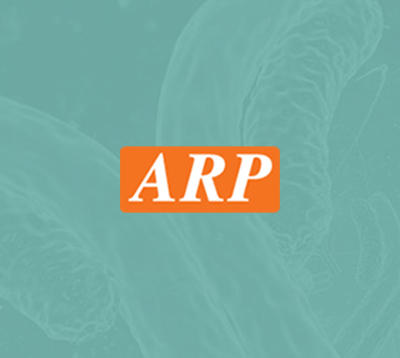Blood
Blood
Blood is an essential body fluid that transports oxygen and nutrients to tissues and removes metabolic waste. It is comprised of four main components: red blood cells (erythrocytes), white blood cells (leukocytes), platelets and plasma, each performing diverse yet interconnected roles. Researchers study blood to understand hematopoiesis (blood cell production); to unravel the normal function of different blood cell types; to determine how blood defects are involved in disease; and to investigate the role of distinct proteins in the immune response, wound healing and various cell signaling pathways.
Our extensive product portfolio contains many different products to support blood research. These include antibodies specific to blood group antigens, erythrocyte markers and cytoskeletal proteins; recombinant erythrocyte and platelet proteins; and ELISA kits for quantifying platelet signaling molecules. All these are of the same high quality you’ve learnt to expect from ARP.
Blood grouping
Red blood cells are grouped according to the expression of two key antigens, A and B, at the cell surface. Depending on whether they exhibit one, both or neither of these, they are assigned as type A, B, AB or O. This grouping is of critical importance for blood transfusions as individuals with only A antigens on the red blood cells have anti-B antibodies in the plasma, and vice versa. The Rhesus status of red blood cells is also important here, specifically whether the cells express Rhesus D. Of the five main Rhesus antigens, Rhesus D is the most likely to stimulate an immune response.
Although the ABO and Rhesus categorization gives rise to 8 different blood groups, 38 blood group systems are now recognised by the International Society of Blood Transfusion (ISBT). Additional antigen systems include Kell, MNS and Lutheran, each of which is defined by unique characteristics. The Kell system antigens are the third most potent immunogens after ABO and Rhesus, while the MNS and Lutheran system antigens are rarely associated with transfusion reactions.
ARP offers a selection of antibodies to blood group antigens, including anti-A blood group and anti-B blood group monoclonal antibodies, as well as antibodies against various Kell and Lutheran system antigens to meet your blood research needs.
Platelets
Also known as thrombocytes, platelets are small non-nucleated cell elements that play an essential role in blood clotting. In their inactive form, they are shaped like very small plates, but upon activation they put out numerous protrusions enabling them to perform their intended function. Platelet activation is stimulated by damage to blood vessels, resulting in a rapid, multi-stage response that promotes clot formation.
Upon activation, platelets release granules containing over 300 different active substances. These include histamine, serotonin, calcium, magnesium and ATP, as well as larger molecules like thrombospondin, von Willebrand factor and prothrombin. Many of these molecules are involved in innate immunity, while some are required for blood homeostasis, adaptive immunity, tissue homeostasis and inflammation.
At ARP, we’re supporting platelet-based blood research with our range of antibodies, proteins and assay kits. Included among these are monoclonal antibodies against important platelet markers; recombinant platelet-derived growth factors; and ELISA kits for quantifying many of the active substances just described.
Erythrocytes
The main role of red blood cells, or erythrocytes, is to transport oxygen from the lungs to the tissues and to remove carbon dioxide as a waste product. Pivotal to this is the red blood cell shape, which is biconcave to aid cellular transport through extremely narrow blood vessels. Red blood cells are able to change shape easily without rupturing or compromising their function due to the structure of the cell membrane. This comprises a lipid bilayer with almost 1,000 different proteins embedded within it.
Band 3 (CD233) is the most abundant protein in the erythrocyte cell membrane, typically found in complex with other proteins. Other key proteins within the erythrocyte membrane and cytoskeleton include protein 4.1 (EPB41), protein 4.2 (EPB42), ankyrin, alpha spectrin, beta spectrin, actin and many members of the different blood group antigen systems.
Our product portfolio includes a range of antibodies to important erythrocyte markers and cytoskeletal proteins, including Band 3, protein 4.1, and many other notable cell membrane proteins.




